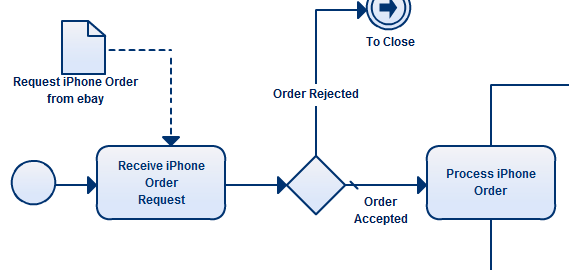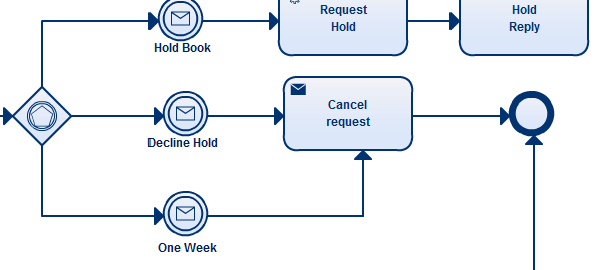
Image credit: Shutterstock
Businesses, both big and small, are becoming increasingly dependent on enterprise platforms in ensuring productivity and continuity. According to Liberty Technology Advisors, such solutions will be essential in ensuring workflow efficiency in the business setting.
In addition, ERP solutions are no longer exclusive to larger corporations. Scalable and accessible cloud-based solutions enable big companies to streamline operations, while these also provide a means for smaller companies to optimize their business for growth.
Enterprise resource planning (ERP) solutions help improve productivity by optimizing supply chains, human resources, and even improving interactions with customers.
While it has been mostly viewed as a “big business” product, ERP solutions are now making a foray into the small business market with products that ensure a scalable solution that fits virtually any business size.
How Can ERP Software Improve Workflow
Driving Smart Decision-Making
ERP solutions enable a seamless and systematic collection of data across multiple business verticals. This allows access to an abundance of information that could be used for decision making. Instead of conducting ad-hoc research only when the need arises, businesses have access to a stream of data that can be shared across different departments. This allows organizations to be better equipped when conducting market and business analyses.
Improve Productivity and Collaboration Between Employees
As mentioned above, the continuous flow of information on different business verticals and operations allows employees to identify areas of improvement and collaborate better to achieve business growth. It also helps them be better informed and aligned with the organization’s goals and objectives.
By default, ERP solutions are designed to provide effective solutions to streamline and speed-up business processes. It automates tedious manual functions which otherwise would have been time consuming. This helps minimize frustrations among employees. When employees no longer need to concern themselves with manual tasks, they can concentrate on other areas of operations and figure out ways of improvement.
Minimize Wastage and Unnecessary Costs
Customized ERP solutions provide a holistic view into business processes by documenting their workflow. This practice enables businesses to identify where the bottlenecks are and accordingly implement plans to improve efficiency. It undoubtedly has a positive impact on the business as it drives the optimal use of business resources.
A direct benefit of improving business processes is reducing operational expenses. ERP software allows organizations to achieve better enterprise resource planning.
Improving Data Security
ERP software developed by highly skilled IT professionals or reputed ERP solution providers offer reliability and security. It will ensure that the business information is safeguarded, while allowing senior management teams to control which teams have access to what information. This eliminates the threat of sensitive information falling into wrong hands.
ERP solutions maintain log reports of who accessed what data and enable managers to allow employees access only those data that are needed for their job function.
Challenges Ahead
Despite all the benefits brought through with ERP systems, there are still many challenges for IT managers and consultants to overcome, particularly when it comes to maintenance. According to Gartner, this can be due to businesses taking a purely tactical approach in deploying an ERP rather than adopting a longer-term strategy.
In particular, ERP systems that consist of heavy customization’s can present a very large obstacle for IT managers when it comes to mapping out and testing infrastructures whenever an update or enhancement is released.
The challenges come in the form of maintenance and enhancement operations. These can become a large project, often requiring months to accomplish. It can be convenient to implement a workflow chart or diagram that clearly delineates enterprise resources, as well as the team’s tasks, accomplishments and strategies to ensure proper implementation, to ensure adequate visibility.
The chief benefit of charting during ERP maintenance is the ability to quickly spot bottlenecks and trouble areas during implementation.
Trends in ERP Deployments and Maintenance
ERP workflow management automation is expected to be a big theme for businesses in 2015. Experts believe that ERP managers and users will look to ERP tools to eliminate any manual or human touches, as well as streamline their workflow.
Automation and Big Data. Charting is still half the story, though. ERP maintenance requires a lot of testing, code cleansing and tracking for dependencies and compatibilities. This can be further streamlined by adopting a means to automate tedious testing, deployment and maintenance processes.
Panaya, a cloud-based platform that leverages big data to automate the testing process, believes that businesses can gain a significant cost and time advantage in deploying upgrades, updates and patches when conducting ERP implementation.
Enhanced Collaboration. During the working phase of maintenance, it will also be important to implement a collaboration solution so the team can check up on progress through multiple channels. This ensures proper accountability, so managers and team members know their responsibilities.
Running a proper collaboration platform can help maintain efficiency, while enabling the team to adequately audit the processes to determine how the project could further be improved. According to studies, a proper knowledge repository system can help reduce costs, improve quality and lower the risks of implementing ERPs.
Post-Modern Approach to ERP. Another trend prevalent starting this year is the so-called post-modern approach to ERP deployments, in contrast to a legacy approach to ERPs, which consists mainly of running bulky on-premises applications with heavy customization.
According to Gartner, CIOs need to take action in order to take advantage of the lower costs, better functional fit and flexibility offered by ERP solutions that blend cloud applications and an on-premises approach.
There might not be a perfect solution to ERP deployments and maintenance. One thing is for sure. As both small and big businesses increase adoption of enterprise platforms, there will be a need to become more agile, competitive and responsive in one’s approach to deploying ERPs.





Its a very helpful blog.
Please describe the role of ERP in Cloud Computing.
Thanks a lot !
It is a great post indeed on ERP. Carry on Nishadha ! Hope everything will be on a platform soon . Wait to have a visualization of it .
Thank for this time worthy great post.